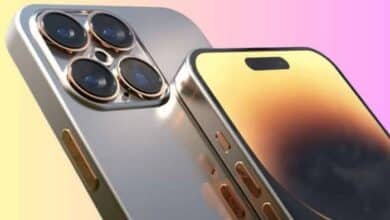Bio Finger: The Future of Biometric Security and Smart Identification

Introduction
The term bio finger refers to the advanced biometric system that uses fingerprints to identify and authenticate individuals. Unlike traditional methods such as passwords or ID cards, bio finger technology relies on unique human fingerprint patterns that cannot be duplicated. This makes bio finger one of the most secure and reliable solutions in modern-day digital security. From office attendance systems to smartphone unlocking, the presence of bio finger systems is becoming essential in almost every sector today.
How Bio Finger Systems Work
Understanding how a bio finger system works is crucial in realizing its importance in daily life. A bio finger device captures the fingerprint pattern of a user through sensors, analyzes the ridges and minutiae points, and stores them in encrypted form. Whenever authentication is required, the bio finger system scans the fingerprint and compares it with stored data to verify identity. Unlike passwords that can be guessed or stolen, bio finger authentication relies on something unique to each person, making it one of the strongest security tools available.
Applications of Bio Finger in Everyday Life
The application of bio finger technology goes far beyond just unlocking a smartphone. Offices and companies now use bio finger attendance systems to track employee presence accurately. Banks utilize bio finger identification to ensure secure transactions and reduce fraud cases. Airports and government agencies use bio finger scanners to verify travelers and enhance border security. In schools and universities, bio finger systems are used to track student attendance. The wide range of applications highlights how bio finger technology has become an integral part of modern identification systems.
Advantages of Using Bio Finger Technology
There are countless benefits to implementing a bio finger system in workplaces, institutions, and daily life. The first advantage is convenience—users don’t have to remember passwords or carry ID cards. Second, bio finger authentication ensures higher security since fingerprints are unique and cannot be easily forged. Third, bio finger technology improves efficiency, as attendance, transactions, and verifications can be done within seconds. Additionally, bio finger reduces paperwork, eliminates buddy punching in offices, and enhances accountability in both public and private organizations.
Bio Finger in Security and Banking
The financial and security industries rely heavily on bio finger technology due to its unmatched accuracy. Banks now use bio finger systems for ATM withdrawals, online banking verification, and high-security vault access. This reduces identity theft and minimizes the chances of fraud. Security companies deploy bio finger scanners in offices, research labs, and military facilities to ensure only authorized individuals gain access. The reliability of bio finger authentication has made it a trusted tool in sectors where data protection and confidentiality are paramount.
Challenges and Limitations of Bio Finger Technology
While bio finger technology is revolutionary, it also comes with challenges and limitations. One major concern is the cost of implementing bio finger systems on a large scale. Small businesses often find it expensive. Another challenge is the issue of data privacy, as storing fingerprints digitally may raise concerns about hacking and misuse. Additionally, some people may face difficulties if their fingerprints are damaged due to injuries or aging, which may cause errors in bio finger scanning. Despite these limitations, advancements in technology are gradually overcoming these challenges, making bio finger systems more accessible and reliable.
The Future of Bio Finger Technology
The future of bio finger technology looks promising with the integration of AI and machine learning. Next-generation bio finger systems will offer faster recognition, higher accuracy, and seamless integration with smart devices. Governments across the world are adopting bio finger systems for national identification cards, healthcare management, and border security. With the rise of digital payments, bio finger authentication is expected to become a global standard in the banking sector. In the coming years, the bio finger system will not only enhance security but also redefine how humans interact with technology.
Conclusion
The evolution of bio finger technology has completely transformed the way we think about security and identification. From smartphones to banking systems, bio finger authentication ensures accuracy, reliability, and efficiency in protecting sensitive information. While challenges like cost and privacy still exist, the rapid advancements in bio finger technology guarantee a future where identity theft and fraud are significantly reduced. In a world that demands speed, safety, and trust, the bio finger system stands out as a revolutionary solution.
FAQs
1: What is bio finger technology?
Bio finger technology is a biometric system that uses unique fingerprint patterns for identification and authentication.
2: Where is bio finger commonly used?
Bio finger is used in offices for attendance, in banks for secure transactions, in smartphones for unlocking, and in airports for security checks.
3: Is bio finger technology safe?
Yes, bio finger technology is considered safe because fingerprints are unique and difficult to duplicate, making it more secure than passwords.
4: What are the limitations of bio finger systems?
The limitations include high installation costs, data privacy concerns, and difficulties in scanning damaged or worn-out fingerprints.
5: What is the future of bio finger technology?
The future of bio finger includes AI-powered systems, faster scanning, better accuracy, and integration with smart devices for global security.





